What Does CO2 Do for Weed Plants?
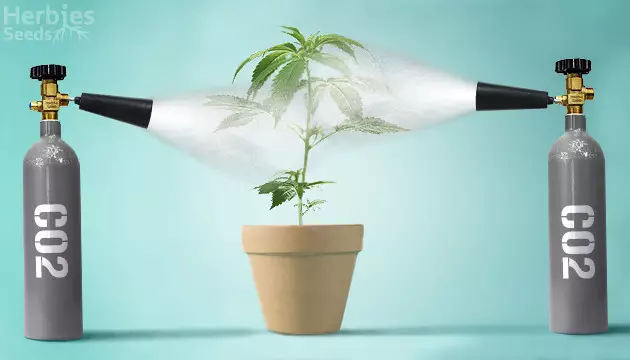
Just like humans can’t live without air, plants need CO2 to survive. CO2, or carbon dioxide, is a colorless, odorless gas that occurs naturally in the atmosphere. It makes up around 400 ppm of fresh air. Interestingly, even aquatic plants (those that live underwater) need CO2 to perform photosynthesis. Cannabis plants are no different. To increase yields and plant growth in your grow room, you need to utilize CO2 for cannabis. Ideal CO2 levels are around 1,000-1,500 ppm during the vegetative stage and 1,200-1,500 ppm during the flowering phase. Make sure to stick to this amount of CO2 in order to get the desired result.
What Are the Benefits of Using CO2?

A cannabis plant’s ability to grow is proportional to the amount of CO2 in its environment. In other words, the more CO2 there is in your garden, the higher your yields will be. Cannabis plants breathe CO2 in through holes under their leaves called stomata. After the plant absorbs CO2, it transfers the molecules to a part of its cell called a chloroplast. These structures then use CO2 for photosynthesis. Using a combination of water, sugar, and CO2, the chloroplast creates energy for the plant to grow.
What Are the Benefits of Using CO2?
High CO2 levels in a garden allow a cannabis plant to use light and nutrients more effectively. In fact, the higher the concentration of CO2 in the air is, the more energy your plants produce. This contributes to boosting plant growth and maximizing yields.
If the CO2 concentration of your indoor grow isn’t at least at the same natural level as outdoors, cannabis plants will suffer and have difficulty photosynthesizing. Most experienced growers agree that adding CO2 to a garden can increase yields by up to 30%.
Does CO2 Speed Up Flowering?
Definitely! It certainly boosts plant growth, especially when adding CO2 to your grow room in the flowering stage. A grower who uses CO2 can make their plants complete the growth cycle about 15% faster. CO2 will also help your plants utilize the wattage of the lights in your garden. If you have more than three plants, adding extra wattage without adding CO2 is essentially useless. As a result, adding a CO2 generator to your garden can help your plants use every last watt of light.
The Right Grow Light Is Important!
You’ll need to add extra lights when growing cannabis to properly take advantage of added CO2. However, adding extra lights can have a host of unintended side effects. For example, you can’t just cram your grow room full of high-intensity lights like high-pressure sodium (HPS) bulbs. These types of lights put off a ton of radiant heat. As a result, you may need to add some climate controls, like an air conditioner, to your garden.
Another approach to avoid this problem is by using light-emitting diodes (LED) lights. These types of lights have a much lower heat output, but they can still provide your plants with the energy they need.

To make sure there’s no risk of overheating and you have just enough light for proper CO2 injection of up to 1,500 PPM, follow this simple guide suitable for both LED and HPS lamps:
90cm x 90cm (3ft x 3ft) of grow space – 600W of light
1m x 1m (3.5ft x 3.5ft) of grow space – 2 x 400W of light
1.2m x 1.2m (4ft x 4ft) of grow space – 1,000W of light
How Can I Add More CO2 to Cannabis Plants?
Now that you know why CO2 is important, you’re probably asking yourself how to add CO2 to your plants. There are several ways you can do this. Some of them include building homemade CO2 remedies for your plants, while others involve using pre-made kits – each technique has its own benefits and drawbacks.
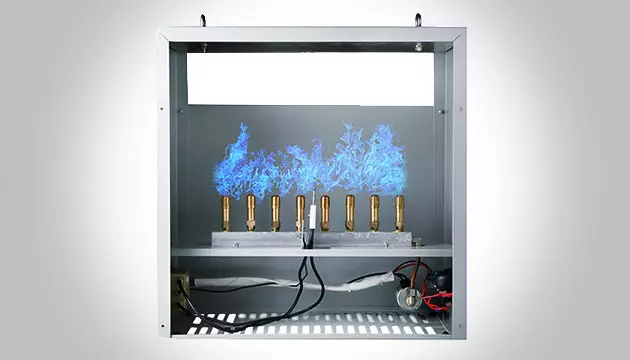
CO2 Generators – What Are They?
For newer growers wondering how to make CO2 for their plants, CO2 generators are a go-to. You can find these at your local hydroponic store. These devices create CO2 by burning propane or other fuels. Once the PPM of CO2 in your garden reaches a certain level, the burner will turn off. They’re a great way to add CO2 on a budget, and you can actually build one yourself using a propane or butane stove. However, they also have some drawbacks. First, a generator produces CO2 by burning gas. This, in turn, will create heat. As a result, you may need to add some climate control to your garden. Additionally, generators utilize an open flame to make CO2. If something goes wrong in your garden, your harvest could potentially burn before you get to taste it.
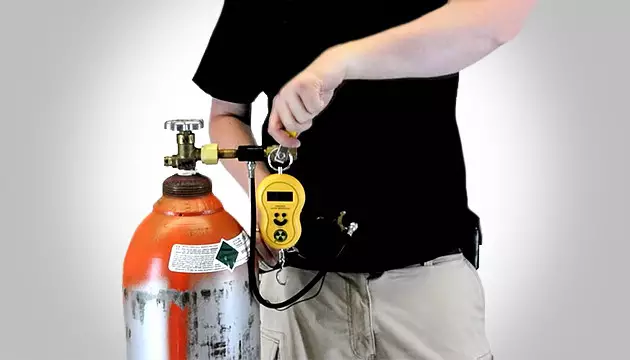
Compressed CO2 – Sophisticated but Expensive
Compressed CO2 is an alternative to CO2 generators. They’re similar to SCUBA tanks. Using a compressed CO2 tank, a large metal container of compressed air slowly releases the gas into your garden. A device on the tank will measure the PPMs of CO2 in your garden and ensure that it stays at the correct level. You can find compressed CO2 in hydroponic stores, home brewing shops, or even some big-box stores like Walmart. Because compressed CO2 doesn’t involve any open flames, you won’t need to worry about increased heat in your garden. You also won’t need to worry about burning your grow room down. However, they’re generally more expensive than CO2 generators.
Using CO2 Bags
A simple method for many small-scale cultivators to introduce CO2 into their growing environment is by using slow-release CO2 bags or bottles. These devices generate CO2 steadily over a period of several days. As a general guideline, one CO2 bag is recommended for every 4x4 space or grow tent.
Alongside CO2 supplementation, it’s essential to utilize a CO2 monitor to track the levels over time. This will help you determine when it's time to replace your CO2 bags and ensure that your plants are receiving the appropriate amount of CO2.
How to Add CO2 to Your Garden When Growing Cannabis?
At this point, we’ve established that CO2 does increase yield and have gone over a few different delivery systems. Let’s look at the best ways to get CO2 supplementation where it matters: to your plants. First, you need to make sure that you’re adding enough CO2. Second, you must ensure that your entire grow area is airtight. Third, you need to know when to add CO2 to your garden. Finally, you’ll want to check that your temperature and humidity are optimized.

How Much CO2 Should I Add To My Garden?
The best CO2 level for cannabis plant growth isn’t set in stone. Instead, the optimal CO2 for plant growth fluctuates depending on the amount of grow light and ambient temperature in your garden. However, most experienced growers agree that you shouldn’t use any more than 1,500 PPM of CO2 in your garden. Any higher than that, and you’ll just be wasting resources. It’s also important to note that high levels of CO2 (higher than 2,000 PPM) can have negative effects on humans. Moreover, PPMs of CO2 higher than 5,000 can be fatal. That’s why commercial cannabis gardens install CO2 detectors that alert growers when the concentration of CO2 becomes dangerous.
Best Way of Adding CO2 to Tent Grow
Because CO2 is a gas, it’s easy for it to escape from your garden if you don’t have a sealed grow room. You can avoid this by purchasing a tent from a hydroponic store, which will come in a sealed kit. Additionally, you can create your own tent out of panda paper, pipes, and duct tape. Make sure to release CO2 into the air from high up in your garden. CO2 is heavier than air, so it will fall toward the ground as it’s released.

Temperature – An Important Consideration
The ambient temperature of your garden can affect how you should use CO2 in your grow room. In general, the higher your temperature, the higher the level of CO2 you should use. Below 70 degrees Fahrenheit (20 Celsius), keep your CO2 level around 800 PPMs. If you run a hotter grow (around 85 degrees Fahrenheit or 30 Celsius), you can pump your CO2 to 1,300 PPMs or higher. However, it’s important to note that 30 degrees Celsius (85 degrees Fahrenheit) is extremely high for a cannabis grow. If you’re running your temperature this high, keep an eye on your plants to ensure they’re not suffering from heat stress or excess humidity.
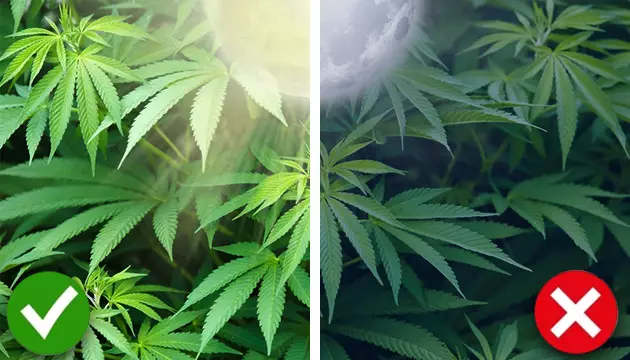
Daytime or Nighttime – When to Add CO2 to Your Grow Room
Plants only use CO2 when they perform photosynthesis. Therefore, you should only run CO2 during daylight hours. While you won’t harm your plants by running CO2 at night, it’s a waste of money. To prevent that, you can attach your CO2 generator or compressed CO2 to a day/night timer. Set the timer to only run during daylight hours to make sure you’re not wasting any precious resources.

When Should I Add CO2 – Flower Or Veg?
CO2 is most important for increasing the rate of the vegetative growth of cannabis – that’s why you need to add CO2 during light hours throughout the vegetative stage, which will help your plants utilize nutrients, light, and other resources to speed up growth. As for the use of CO2 during flowering, most growers agree that it’s beneficial for bud production to use it during the initial 14-21 days of flowering. Beyond that, results vary, and there’s no proven evidence for improved bud growth, so it’s up to you.
When to Stop CO2 During Flowering?
It’s crucial to know when to stop using CO2 during flowering. You definitely don’t need to run CO2 from day 1 of flower to the day of harvest. Even if you keep CO2 on for longer than 3 weeks of flowering, turn it off 2 weeks before the harvest. Keeping it on won’t necessarily hurt your plants, but it’s a waste of resources.
Final Thoughts
Now that you’re familiar with why plants need CO2, you can apply these lessons to your own garden to increase plant growth. Figuring out the correct way to use CO2 for cannabis can be an art form, and it may take a few experiments before you have your CO2 dialed in. However, once you do, you’ll see the benefits almost immediately!
Herbies Head Shop expressly refuses to support the use, production, or supply of illegal substances. For more details read our Legal Disclaimer.






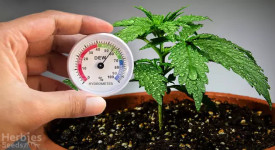

Thank you for leaving a comment for us!
Your feedback will be posted shortly after our moderator checks it.
Please note that we don’t publish reviews that: